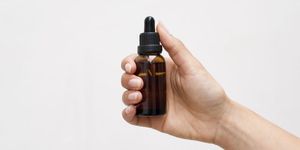Does Increased Ventilation Indoors Help Prevent the Spread of COVID-19? The Answer is Complicated.
Since the COVID-19 pandemic began, researchers have sought new ways to curb the spread of the virus. As colder weather approached near the end of 2020 and more people moved back indoors, the question of how to keep people safe inside became a pressing question.
The answer to the question, however, is a bit more complicated than you might think.
Experts have previously suggested that ventilation is a crucial component to slowing the spread of the COVID-19 indoors. However, a team of HVAC, aerosol, and virus experts at the US Department of Energy’s Pacific Northwest National Laboratory suggest that we may need to think more critically at the types of ventilation we use in buildings and how they affect the concentration of viral particles in a space, particularly in multi-room buildings. Of course other necessities are also affected by this such as your method of heat for said property, usually a boiler that has boiler insurance from a reputable company such as Hometree.
According to a study published in Building and Environment, researchers conducted simulations to understand the effects of different types of ventilation in multi-room buildings on the transmission and spread of COVID-19.
"Most studies have looked at particle levels in just one room, and for a one-room building, increased ventilation is always useful to reducing their [particles] concentration," said Leonard Pease, lead author of the study. "But for a building with more than one room, air exchanges can pose a risk in the adjacent rooms by elevating virus concentrations more quickly than would otherwise occur.
Specifically, researchers examined three different factors and their effect on viral transmission: filtration, outdoor air incorporation, and ventilation, or air exchanges. Based on their simulations, researchers learned the following:
Filtration. Using different types of filters changed levels of viral concentrations in a given room for the better (for example, a MERV-13 filter reduced viral concentrations by 93%).
Outdoor air incorporation. The integration of clean outdoor air into a multi-room building’s air supply was found to reduce the risk of viral infection. Replacing about a third of a building’s air supply with outdoor air reduced the risk of infection by about 20%
Air exchange rates. Here’s where things get complicated. While more frequent air exchanges benefited one room in terms of reduced transmission risk, connected rooms didn’t fare as well. Too much air exchange increased the concentration of viral particles and the risk of infection in adjoining rooms by nearly 10 times the risk at lower exchange rates.
"For the source room, clearly more ventilation is a good thing. But that air goes somewhere," said Pease. "Maybe more ventilation is not always the solution."
Researchers were quick to note that their findings were specific to the conditions they programmed into their simulation, highlighting a need for more research. The team is currently conducting more simulation experiments to consider other factors that may play a role in viral transmission indoors, including different particle sizes and how long a viral particle is infectious.
Source: Science Daily








